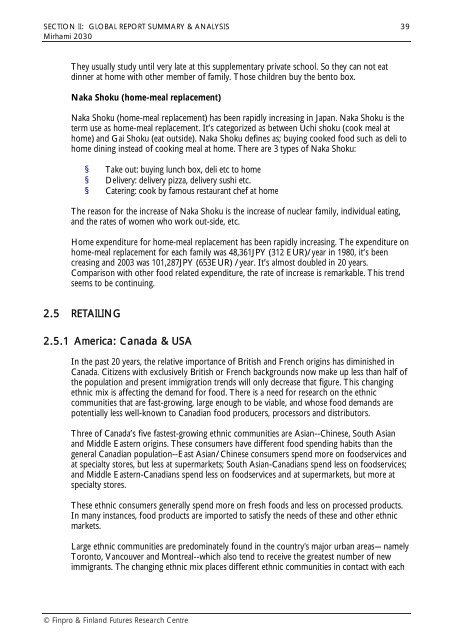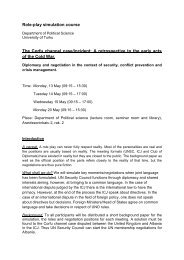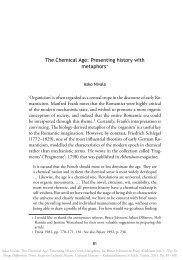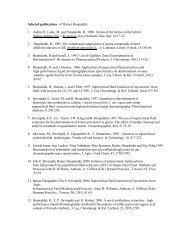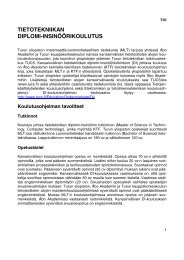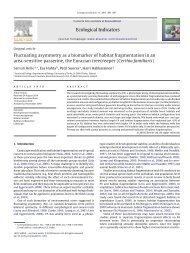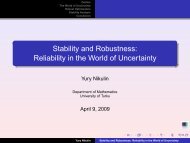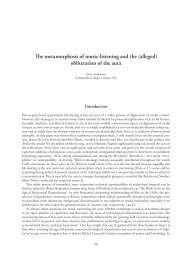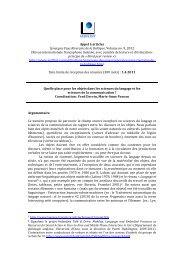MIRHAMI 2030 “Future Images of Food Consumption", Phase
MIRHAMI 2030 “Future Images of Food Consumption", Phase
MIRHAMI 2030 “Future Images of Food Consumption", Phase
You also want an ePaper? Increase the reach of your titles
YUMPU automatically turns print PDFs into web optimized ePapers that Google loves.
SECTION II: GLOBAL REPORT SUMMARY & ANALYSIS<br />
Mirhami <strong>2030</strong><br />
They usually study until very late at this supplementary private school. So they can not eat<br />
dinner at home with other member <strong>of</strong> family. Those children buy the bento box.<br />
Naka Shoku (homemeal replacement)<br />
Naka Shoku (homemeal replacement) has been rapidly increasing in Japan. Naka Shoku is the<br />
term use as homemeal replacement. It’s categorized as between Uchi shoku (cook meal at<br />
home) and Gai Shoku (eat outside). Naka Shoku defines as; buying cooked food such as deli to<br />
home dining instead <strong>of</strong> cooking meal at home. There are 3 types <strong>of</strong> Naka Shoku:<br />
§ Take out: buying lunch box, deli etc to home<br />
§ Delivery: delivery pizza, delivery sushi etc.<br />
§ Catering: cook by famous restaurant chef at home<br />
The reason for the increase <strong>of</strong> Naka Shoku is the increase <strong>of</strong> nuclear family, individual eating,<br />
and the rates <strong>of</strong> women who work outside, etc.<br />
Home expenditure for homemeal replacement has been rapidly increasing. The expenditure on<br />
homemeal replacement for each family was 48,361JPY (312 EUR)/year in 1980, it’s been<br />
creasing and 2003 was 101,287JPY (653EUR) /year. It’s almost doubled in 20 years.<br />
Comparison with other food related expenditure, the rate <strong>of</strong> increase is remarkable. This trend<br />
seems to be continuing.<br />
2.5 RETAILING<br />
2.5.1 America: Canada & USA<br />
In the past 20 years, the relative importance <strong>of</strong> British and French origins has diminished in<br />
Canada. Citizens with exclusively British or French backgrounds now make up less than half <strong>of</strong><br />
the population and present immigration trends will only decrease that figure. This changing<br />
ethnic mix is affecting the demand for food. There is a need for research on the ethnic<br />
communities that are fastgrowing, large enough to be viable, and whose food demands are<br />
potentially less wellknown to Canadian food producers, processors and distributors.<br />
Three <strong>of</strong> Canada’s five fastestgrowing ethnic communities are AsianChinese, South Asian<br />
and Middle Eastern origins. These consumers have different food spending habits than the<br />
general Canadian populationEast Asian/Chinese consumers spend more on foodservices and<br />
at specialty stores, but less at supermarkets; South AsianCanadians spend less on foodservices;<br />
and Middle EasternCanadians spend less on foodservices and at supermarkets, but more at<br />
specialty stores.<br />
These ethnic consumers generally spend more on fresh foods and less on processed products.<br />
In many instances, food products are imported to satisfy the needs <strong>of</strong> these and other ethnic<br />
markets.<br />
Large ethnic communities are predominately found in the country's major urban areas— namely<br />
Toronto, Vancouver and Montrealwhich also tend to receive the greatest number <strong>of</strong> new<br />
immigrants. The changing ethnic mix places different ethnic communities in contact with each<br />
© Finpro & Finland Futures Research Centre<br />
39


